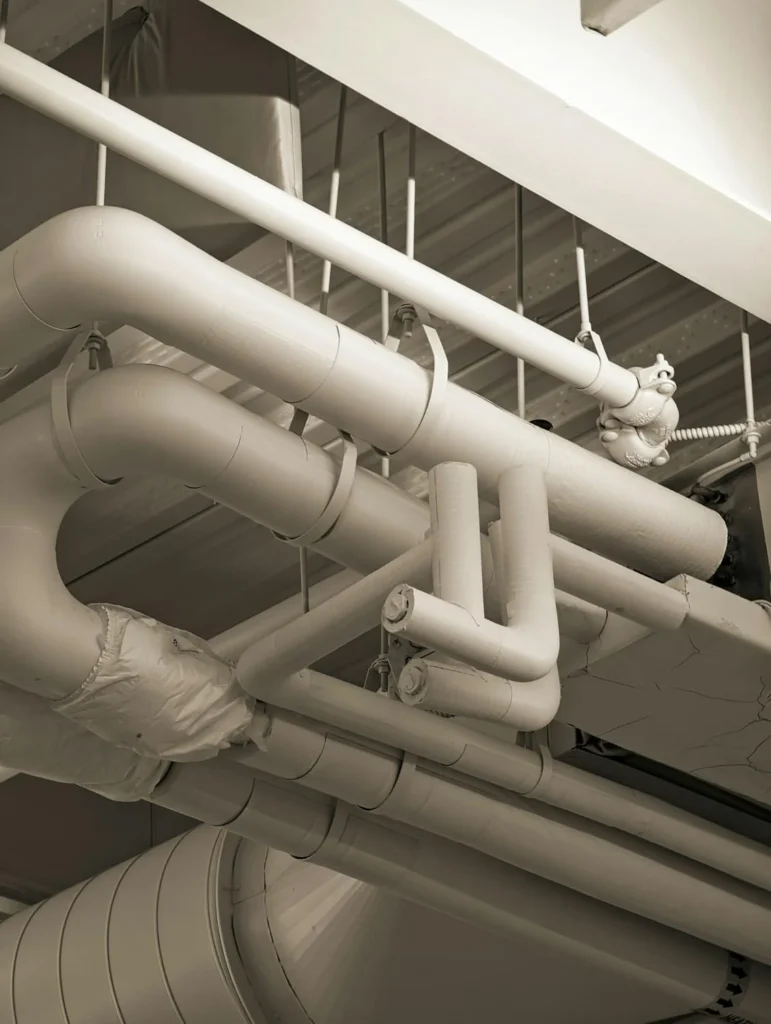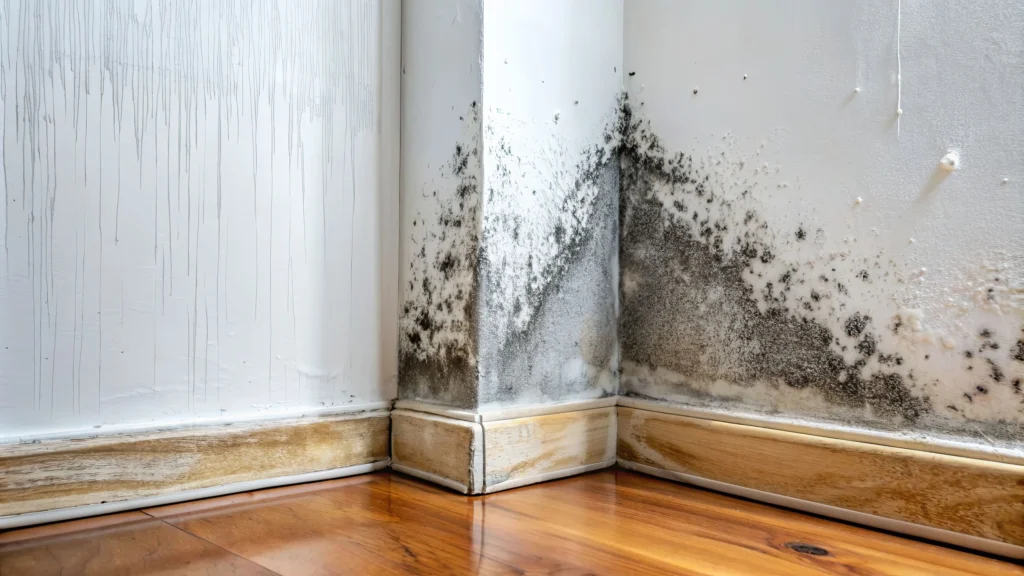Managing rental properties in the UK comes with a host of responsibilities, but one of the most crucial, and often overlooked, is staying on top of damp issues. Left unchecked, damp can cause serious structural damage, create health risks for tenants, and ultimately leave landlords facing costly repairs and legal action.
In a market where tenant rights are under increasing protection and property standards are scrutinised more than ever, commissioning regular damp surveys isn’t just a precaution, it’s a necessity.
Here’s everything landlords need to know about damp surveys in the UK rental market, from common causes of damp to the potential risks of ignoring it.
Why damp surveys should be a top priority for UK landlords
The UK’s unique climate makes damp a prevalent issue across the housing stock. In fact, according to a 2023 survey, approximately 29% of UK homes suffer from some form of damp, mould, or condensation problem. Alarmingly, private rental properties are statistically more likely to be affected compared to owner-occupied homes.
This isn’t just an aesthetic issue. Damp and mould can:
- Cause respiratory problems and worsen conditions like asthma.
- Damage walls, floors, ceilings, and even the property’s structural integrity.
- Lead to legal claims if tenants believe their health has been affected by the living conditions.
- Result in enforcement action from local councils under the Housing Health and Safety Rating System (HHSRS).
Following the tragic death of two-year-old Awaab Ishak in 2020, which was linked directly to exposure to mould in his home, the UK government introduced Awaab’s Law, which will require landlords to respond to and address reports of damp and mould within strict legal timeframes. This marks a major shift in accountability and makes it even more vital for landlords to proactively manage damp issues before they escalate. For further information on Awaab’s Law, read ‘Awaab’s Law: What it means for tenants and landlords in the UK‘
For landlords, ensuring their properties are free of damp is not just about protecting the building, it’s about fulfilling their legal obligations under the Landlord and Tenant Act 1985 and The Homes (Fitness for Human Habitation) Act 2018.
Common causes of damp
Understanding what causes damp can help landlords stay one step ahead. As outlined in ‘What are the 7 most common causes of damp in UK homes?’, the most common causes are:
Penetrating damp: Caused by water leaking through walls, roofs, or windows due to defects like broken roof tiles, damaged pointing, or failed seals.
Rising damp: Water from the ground rises through walls via capillary action when the damp-proof course (DPC) is missing or damaged.
Condensation: The most common form of damp in UK homes, caused by excess moisture from everyday activities like cooking, washing, and drying clothes indoors without adequate ventilation.
Roof defects: Missing tiles, damaged flashing, or blocked gutters allow rainwater to enter the property.
Plumbing leaks: Small leaks under sinks, behind appliances, or in pipework can go unnoticed for months, causing serious damp and mould problems.
Blocked or broken gutters: Overflowing gutters direct water down the walls of a building, leading to penetrating damp over time.
Poor ventilation: Without sufficient airflow, moisture has nowhere to escape, resulting in condensation, especially in bathrooms, kitchens, and bedrooms.
What exactly are damp surveys?
A damp survey is a detailed inspection carried out by a trained professional to assess the presence, causes, and extent of damp within a property. It goes beyond a simple visual check and often involves:
- A full visual inspection of walls, ceilings, floors, and joinery.
- Testing for moisture content using electronic meters.
- Identifying the type of damp present (penetrating, rising, or condensation).
- Thermal imaging to detect hidden damp or cold spots.
- Recommendations for remediation, including estimates for repairs.
- Advice on improving ventilation and lifestyle habits to prevent future issues.
At the end of the survey, landlords receive a comprehensive report highlighting any issues, their likely causes, and recommendations for remedial action.
Damp surveys can typically cost between £250 to £400 depending on the size and location of the property, and the depth of the investigation. This is a small price to pay compared to the cost of major remedial works or legal fees from tenant disputes.
When selecting a damp surveyor, please remember to look at the small print in detail as the detail of the results can vary significantly between cheaper and more premium surveys.
Why regular damp surveys are crucial in rental properties
Rental properties are particularly vulnerable to damp issues for several reasons:
Tenant lifestyle habits: Tenants may not ventilate properly, report small leaks promptly, or maintain heating adequately, inadvertently encouraging damp conditions.
Lack of owner visibility: Landlords may not visit the property regularly, allowing small issues to escalate unseen.
Property age: Many rental properties, especially in cities like London, Manchester, and Birmingham, are older buildings with outdated damp proofing measures.
A damp survey can catch problems early before they develop into major repairs or legal disputes.
But how often should landlords look to conduct damp surveys?
Ideally, landlords should arrange a professional damp survey:
Before letting a property: To ensure it is fit for occupation.
Between tenancies: To spot issues that tenants may not have reported.
Every 5 years (maximum): As part of a broader property maintenance schedule.
Top tips for landlords to prevent damp and mould
Alongside commissioning damp surveys, landlords should take proactive steps to reduce damp risks:
Ensure adequate ventilation: Install extractor fans in kitchens and bathrooms.
Maintain heating levels: Encourage tenants to heat the property adequately during colder months.
Fix leaks promptly: Even minor leaks can cause big problems if left unattended.
Gutter maintenance: Arrange regular gutter cleaning to prevent overflow issues.
Insulate properly: Improve insulation to reduce cold spots and condensation risks.
Providing tenants with clear guidance on how to manage moisture in the home can also make a significant difference.
Damp surveys are a vital investment for landlords
In the UK rental market, where tenant expectations and legal standards are higher than ever, especially after the update to Awaab’s Law, ignoring damp is simply not an option.
A professional damp survey provides peace of mind for landlords, protects tenant health, and ensures compliance with the law. It can also save significant money in the long term by identifying problems early before they spiral into major repairs.
Landlords who take damp seriously will not only protect their investments but also enhance their reputation, attract long-term tenants, and stay on the right side of the law.
If you’re a landlord, don’t wait until it’s too late, book a professional damp survey and safeguard your property’s future.





















